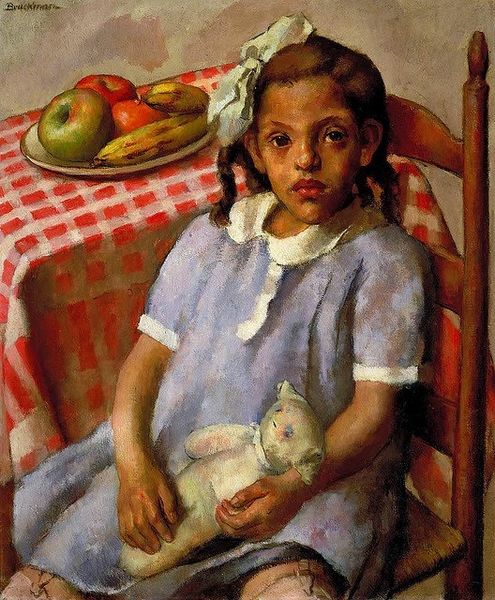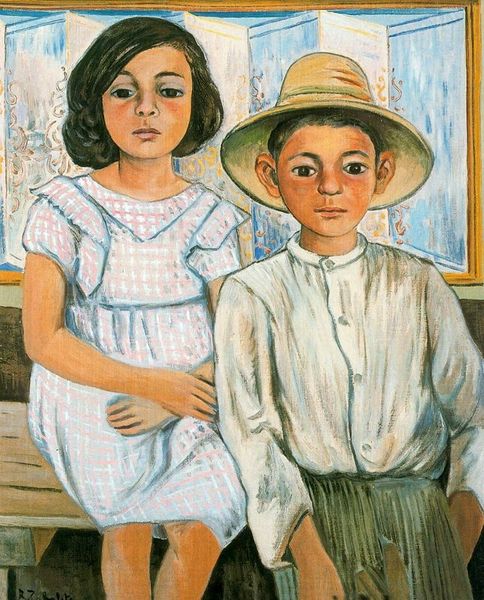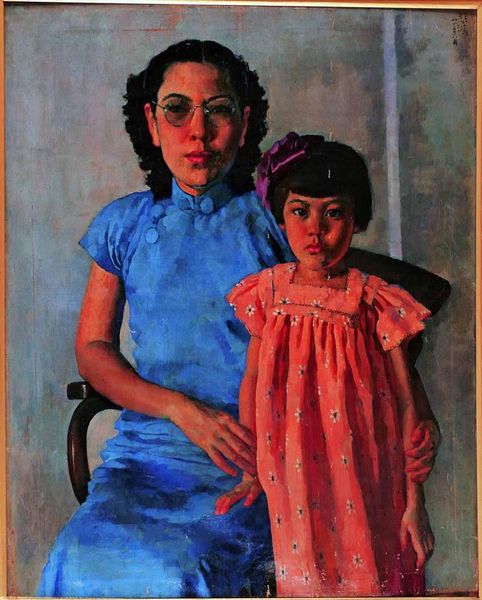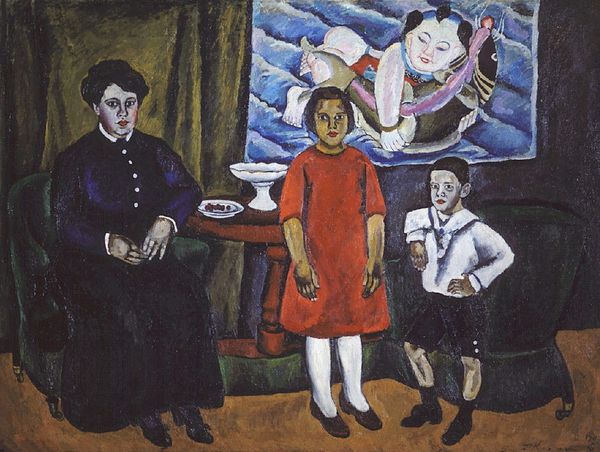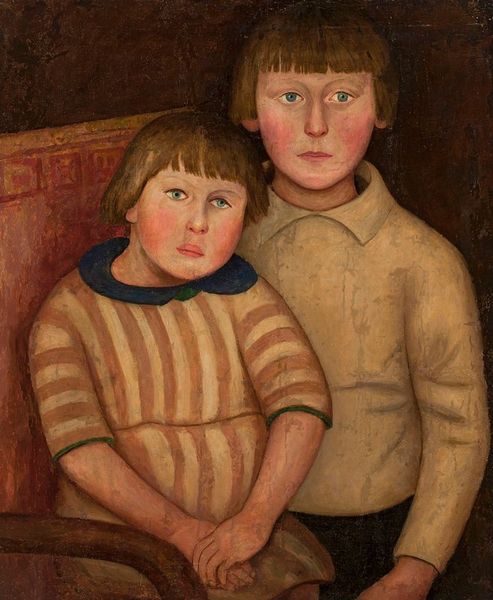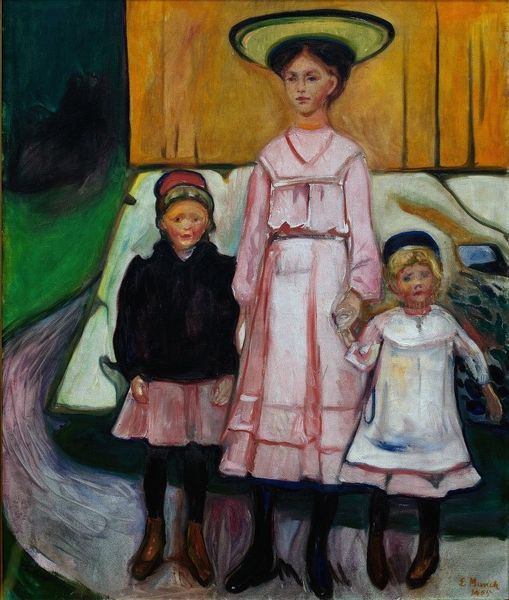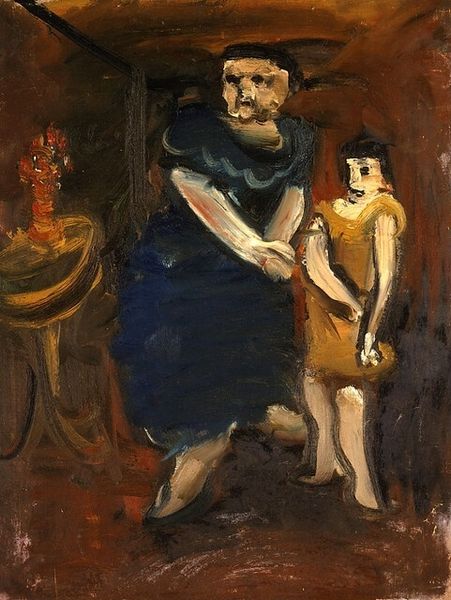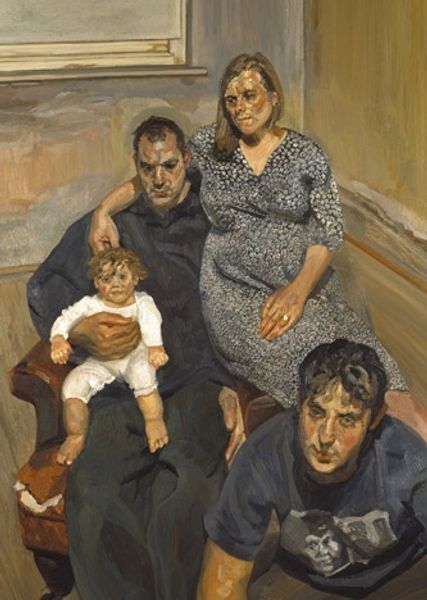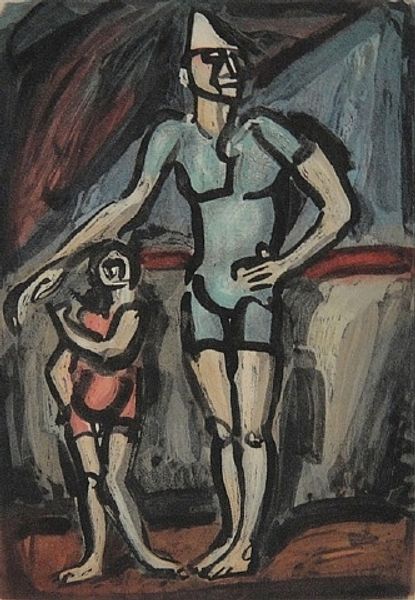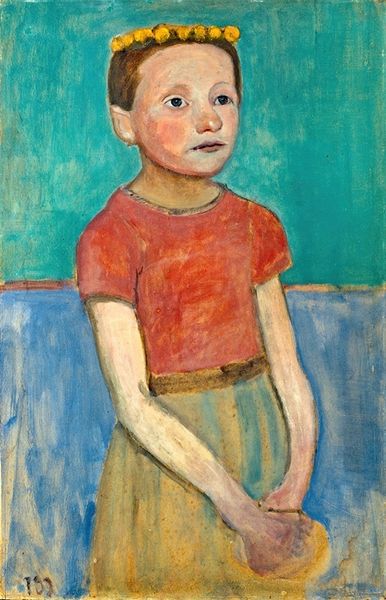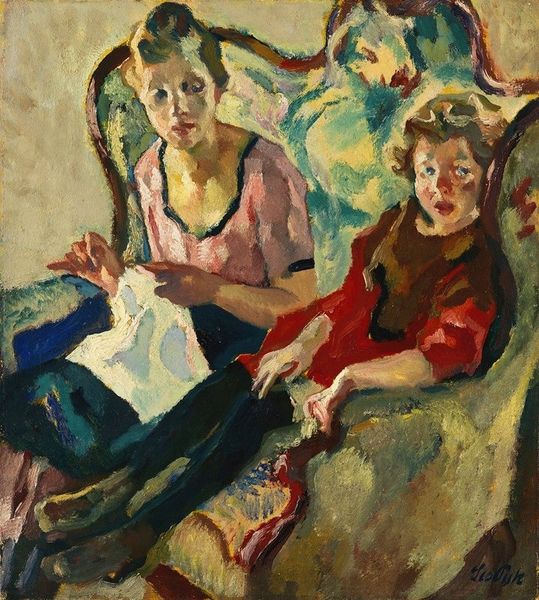
Copyright: Alice Neel,Fair Use
Editor: This is Alice Neel's "Robert, Helen and Ed," painted in 1952. It’s an oil painting of three children, and the first thing I notice is the rawness of the brushstrokes. They feel very direct and honest. What do you see in this piece? Curator: I see a fascinating commentary on labor and domesticity, presented through the very materials Neel employed. Consider the quick, almost crude application of the oil paint. It’s not about illusionism; it’s about the act of painting itself, the physical work. Neel, as a working mother herself, seems to highlight the labor inherent in both art-making and child-rearing. The unfinished background reinforces this sense of work-in-progress, perpetually unresolved. What are your thoughts on that relationship? Editor: That's interesting, the idea of an "unfinished" domesticity reflected in the paint itself. I hadn't considered how her own lived experiences as a working woman might inform her approach. Curator: Precisely. The 'realism' here isn't photographic; it's material. It’s in the visible brushstrokes, the unflattering, even confrontational, portrayal of the children. Look at their clothing: the utilitarian fabrics, the implied constant movement and activity associated with childhood reflected in her painting choices. Neel strips away the romantic veneer typically associated with portraiture. How might the 'Ashcan School' movement also play into that idea? Editor: So, by emphasizing the physical act of painting and the everyday reality of the subjects, she is making a statement about the value of both artistic and domestic labor. I see that link with the Ashcan School's focus on ordinary life now. Curator: Exactly. And thinking about postwar America, where ideals of domestic perfection were being heavily marketed, Neel seems to be subverting that narrative through her material choices and unflinching gaze. Editor: I never thought about the materiality of the painting in connection with her socio-political context. Thanks for opening my eyes. Curator: It highlights the interconnectedness of art and life, the hand behind the image, and the labor involved in constructing meaning. Always question what’s on the surface – what's underneath the layers of paint reveals so much.
Comments
No comments
Be the first to comment and join the conversation on the ultimate creative platform.

